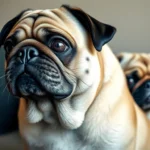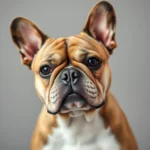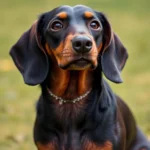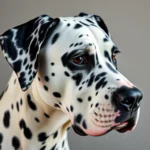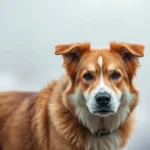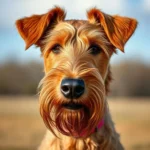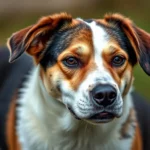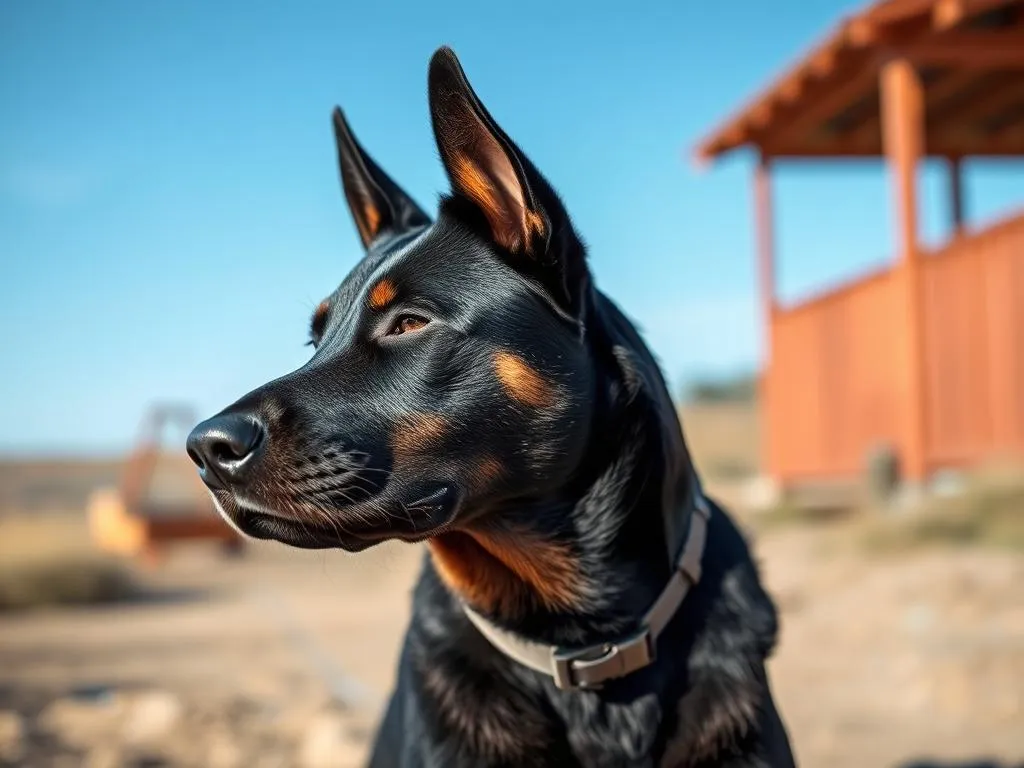
Introduction
Understanding different dog breeds is essential for prospective dog owners, as each breed comes with its own unique traits and requirements. Among these breeds, the Beauceron stands out for its remarkable abilities and distinctive characteristics. This article delves into the rich history, physical traits, temperament, training needs, and care requirements of the Beauceron, providing a comprehensive guide for anyone interested in this exceptional breed.
History of the Beauceron
Origin and Development
The Beauceron is a French herding breed, with roots tracing back several centuries. Originally bred for herding sheep and cattle, these dogs were indispensable to farmers in the Beauce region of France. Their versatility and intelligence made them ideal working dogs, capable of handling various tasks beyond herding, including guarding livestock and property.
Throughout its history, the Beauceron has played a significant role in agricultural communities, showcasing its keen instincts and strong work ethic. As time passed, this breed transitioned from a purely working dog to a family companion while still retaining its herding abilities.
Recognition and Standards
The Beauceron was first recognized by the French Kennel Club (Société Centrale Canine) in the early 20th century. The Fédération Cynologique Internationale (FCI) officially recognized the breed in 1954, establishing standardized characteristics and guidelines. In the United States, the Beauceron is recognized by the American Kennel Club (AKC) as a member of the herding group. Breed standards emphasize its size, coat type, and temperament, ensuring that the Beauceron remains true to its heritage.
Physical Characteristics
Size and Weight
The Beauceron is a robust and athletic breed, with males typically standing between 24 to 27.5 inches tall and weighing between 70 to 110 pounds. Females are slightly smaller, ranging from 22 to 25.5 inches in height and weighing between 50 to 80 pounds. This breed’s muscular build and strong bones contribute to its agility and stamina.
Coat and Color
The Beauceron boasts a short, dense, and weather-resistant double coat that provides protection against various climate conditions. The breed comes in several color patterns, with the most common being black and tan. Other variations include blue and tan, as well as harlequin patterns. The coat requires minimal grooming, making it relatively easy to maintain.
Distinctive Features
Notable features of the Beauceron include its well-defined, muscular body and a long, straight tail. The breed typically has erect ears but can also have semi-erect ears, which adds to its distinctive appearance. The Beauceron exudes strength and confidence, making it an impressive presence in any setting.
Temperament and Behavior
General Temperament
The Beauceron is known for its intelligent, loyal, and protective nature. These dogs are fiercely devoted to their families and can be reserved around strangers, making them excellent watchdogs. Their strong instincts make them alert and responsive to their surroundings, which can be both a blessing and a challenge for owners.
Behavioral Traits
Socialization is crucial for the Beauceron, as early exposure to different environments, people, and other animals helps shape their temperament. While they are generally good with children and family members, they may exhibit protective behaviors towards strangers. Owners should work on introducing their Beauceron to various situations to foster a well-adjusted adult dog.
Common behavioral issues in Beaucerons can include excessive barking or territorial aggression. Addressing these tendencies through consistent training and positive reinforcement can help mitigate potential problems.
Work Ethic
As a working dog, the Beauceron thrives on having a job to do. They excel in herding, guarding, and various canine sports, such as agility and obedience competitions. Their strong work ethic and intelligence make them eager learners, but they require mental and physical stimulation to prevent boredom.
Training and Socialization
Training Techniques
Training a Beauceron requires patience, consistency, and positive reinforcement methods. These dogs respond well to praise and rewards, making treats and verbal encouragement effective tools in training. Early training is essential, as Beaucerons are quick learners and tend to pick up commands faster than many other breeds.
Establishing boundaries and routines helps create a structured environment that the Beauceron can thrive in. Socialization should also begin early, exposing the dog to a variety of situations that will encourage adaptability and confidence.
Socialization Needs
Socialization plays a vital role in developing a balanced Beauceron. Engaging with other dogs and people helps them build positive relationships and reduces the likelihood of fear-based behaviors. Attending puppy classes or group training sessions can provide a safe and controlled environment for socialization.
Challenges in Training
While Beaucerons are intelligent, they can also be strong-willed and independent. This trait can pose challenges during training, especially if they sense inconsistency in their owner’s commands. Owners should remain patient and persistent, using clear commands and maintaining a positive attitude to overcome training obstacles.
Health and Care
Common Health Issues
Like any breed, the Beauceron is prone to certain health issues. Common genetic problems include hip dysplasia, elbow dysplasia, and heart conditions. Regular health screenings and preventive care are vital to maintaining the health of a Beauceron. Owners should work closely with their veterinarian to establish a health plan that includes routine check-ups and vaccinations.
Diet and Nutrition
A balanced diet is crucial for keeping a Beauceron healthy and energetic. High-quality dog food, whether dry, wet, or raw, should be chosen based on the dog’s age, weight, and activity level. Portion control is essential to prevent obesity, and feeding schedules should be consistent. Owners can consult their veterinarian for specific dietary recommendations tailored to their dog’s needs.
Exercise Requirements
The Beauceron requires a significant amount of exercise to keep both body and mind active. Daily walks, playtime, and structured activities such as agility training or obedience classes are highly beneficial. Engaging in interactive games like fetch or hide-and-seek can also provide the mental stimulation these dogs need to stay satisfied and content.
Living with a Beauceron
Ideal Living Conditions
The Beauceron thrives in environments that offer plenty of space to roam and play. While they can adapt to apartment living, access to a secure yard is ideal for this active breed. They do best in moderate climates but can adjust to various weather conditions if properly acclimated.
Family Compatibility
This breed is generally good with children and can coexist peacefully with other pets if socialized properly from a young age. Their protective nature makes them excellent family companions, but supervision is always recommended, especially with smaller animals or young children.
Grooming Needs
Grooming a Beauceron is relatively straightforward, requiring minimal effort compared to other breeds. Regular brushing helps manage shedding, especially during seasonal changes. Bathing should be done as needed, and nail trimming, ear cleaning, and dental care should also be part of a regular grooming routine.
Conclusion
The Beauceron is a remarkable breed with a rich history, unique physical characteristics, and an unwavering loyalty that makes it a fantastic companion. With proper training, socialization, and care, a Beauceron can thrive in various living conditions and become a beloved member of the family.
Potential owners should consider their lifestyle and readiness to commit to the exercise, training, and care that this intelligent breed requires. The Beauceron is not just a pet; it’s a companion that offers companionship, protection, and unwavering loyalty.
FAQs
Common Questions About the Beauceron
What is the average lifespan of a Beauceron?
The average lifespan of a Beauceron is typically around 10 to 12 years, depending on health and care.
Are Beaucerons good with children?
Yes, Beaucerons are generally good with children, especially when socialized from a young age.
Do Beaucerons shed a lot?
Beaucerons have a short, dense coat that sheds moderately, with increased shedding during seasonal changes.
How much exercise does a Beauceron need daily?
Beaucerons require at least 1 to 2 hours of exercise daily, including walks, playtime, and mental stimulation activities.
Myths vs. Facts
Myth: Beaucerons are aggressive dogs.
Fact: While Beaucerons can be protective, they are not inherently aggressive. Proper training and socialization can foster a well-mannered temperament.
Myth: Beaucerons are only working dogs.
Fact: While they excel as working dogs, Beaucerons can also be loving family pets with the right training and care.
Myth: Beaucerons require extensive grooming.
Fact: Beaucerons have low grooming needs, requiring only regular brushing and occasional baths.
